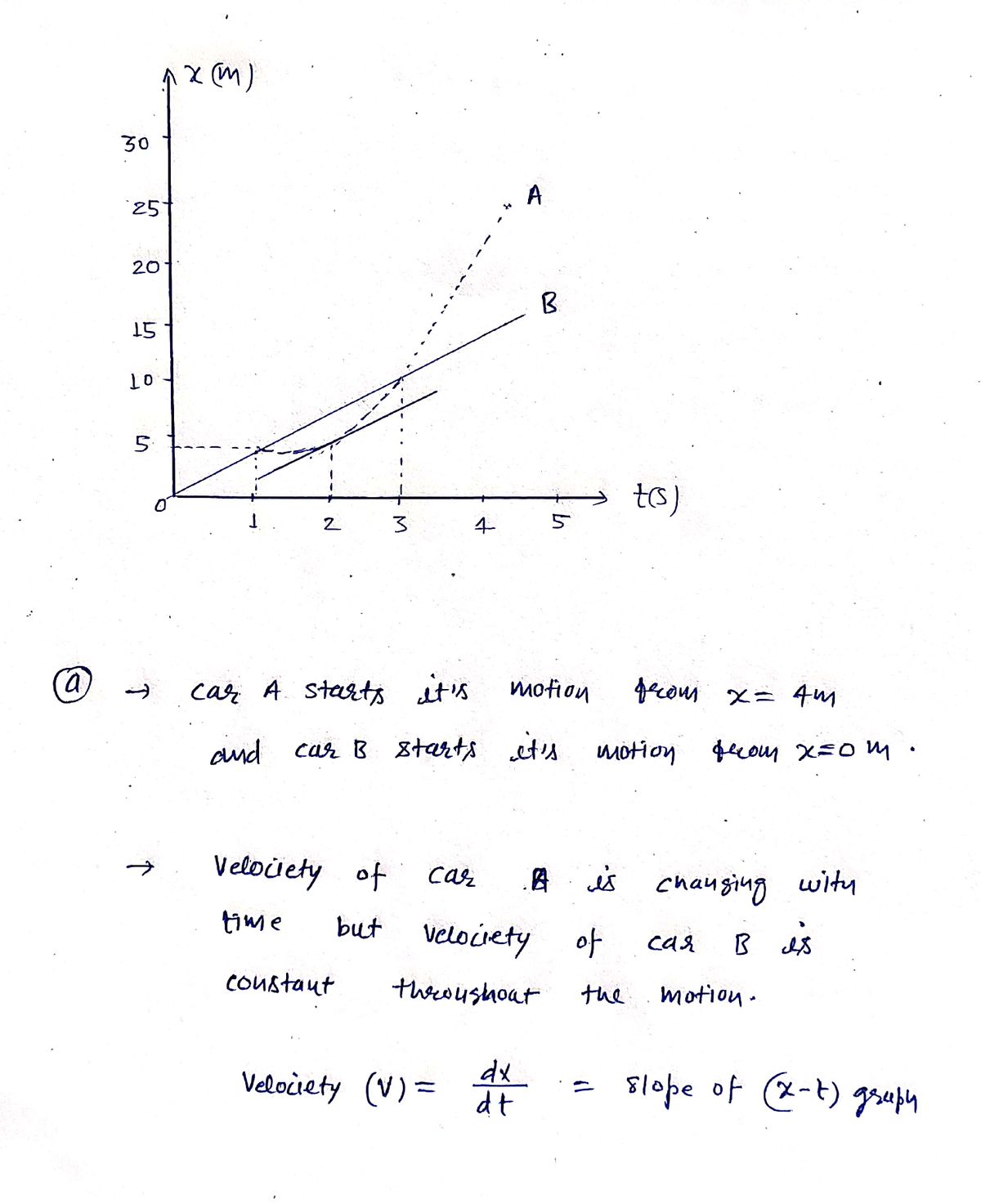8) (pr) Position Graph Interpretation: Two cars, A and B, move along the x-axis. The graph of position vs. time is shown below. a) Describe the motion in detail. x (m) 25 20 15- 10 5 0 B t(s) 0 1 2 3 4 b) At what time(s) do they have the same position? Explain how you know. c) At what time(s) do they have the same velocity? Explain how you know. d) At what time(s) does A pass B? At what time(s) does B pass A? e) Double-check your detailed description of the motion for the first question above.
Displacement, Velocity and Acceleration
In classical mechanics, kinematics deals with the motion of a particle. It deals only with the position, velocity, acceleration, and displacement of a particle. It has no concern about the source of motion.
Linear Displacement
The term "displacement" refers to when something shifts away from its original "location," and "linear" refers to a straight line. As a result, “Linear Displacement” can be described as the movement of an object in a straight line along a single axis, for example, from side to side or up and down. Non-contact sensors such as LVDTs and other linear location sensors can calculate linear displacement. Non-contact sensors such as LVDTs and other linear location sensors can calculate linear displacement. Linear displacement is usually measured in millimeters or inches and may be positive or negative.


Step by step
Solved in 3 steps with 2 images









